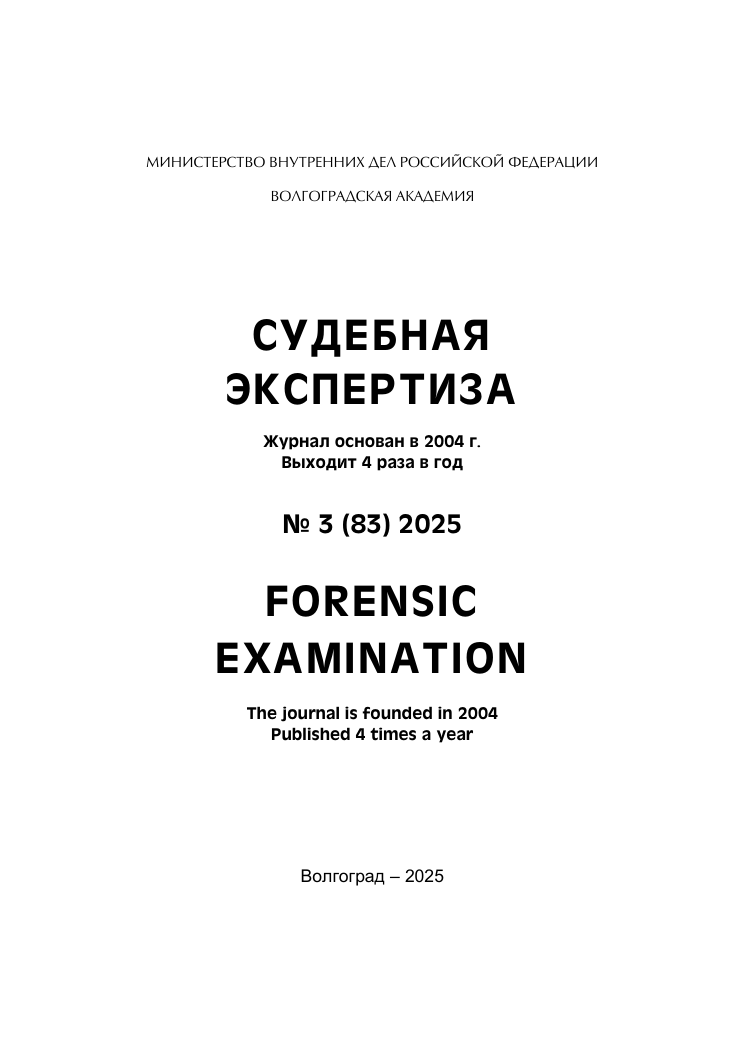V.Ya. Kikot Moscow University of the Ministry of Internal Affairs of Russia (Department of Forensic expertise of the educational and scientific complex of forensic examination, teacher)
Moscow, Russian Federation
The article discusses the key organizational and methodological aspects of assessing the suitability of potential carriers of genetic information as a separate stage in conducting DNA analysis. The author pays special attention to the specifics of conducting genetic identification studies of DNA, which is the main purpose of studying human hereditary traits. The article emphasizes the interdependence of the process of establishing the suitability of isolated DNA for conducting comparative genetic analysis, which ensures the possibility of further establishing the identity (or lack thereof) between the objects under study. The author pays special attention to the presentation of the algorithm for DNA normalization, which is carried out taking into account a comprehensive analysis of the qualitative and quantitative characteristics of the object under study and the specific features of the expert situation. The importance of this stage of expert research is noted, as it determines the preparation of an informative nucleotide sequence for the amplification reaction (polymerase chain reaction – PCR), the results of which are the sought-for data (features) used in further comparative analysis.
genetic identification, biological traces, DNA normalization, suitability of research objects, DNA analysis, comparative analysis
1. Dronova, O. B., Sidorenko, D. N. Institute of Forensic Expertise in Russia: genesis and formation // Bulletin of St. Petersburg University. Right. 2024. Vol. 15, No. 3. pp. 796. pp. 780-797.
2. Badzyuk I. L., Golodkov Yu. E., Larionova E. Yu. Analysis of Modern Methods of DNA Extraction from Biological Objects of Forensic Expertise // Bulletin of the East Siberian Institute of the Ministry of Internal Affairs of Russia. 2012. No. 1 (60). Pp. 81-89.
3. Ustimenko G.O. Criminalistic identification: concept, features // Young Scientist. – 2023. - No. 46. pp. 307-309.
4. Kashayeva A. A. The Concept and Scientific Foundations of Forensic Identification // Economics and Society. 2016. No. 12-1 (31). Pp. 1341-1343.
5. Moiseeva T.F. Modern Methods of Diagnosing Human Properties and States Based on Their Biological Traces // Bulletin of Economic Security. 2019. No. 2. Pp. 210-213.
6. Questions of cybernetics and law: [collection of articles] / Academy of Sciences of the USSR, Sci. Council on Cybernetics [et al.; editorial board: V. N. Kudryavtsev (ed.) et al.]. Moscow: Nauka, 1967. 310 p. // Kirsanov Z.I. Mathematical research methods in criminalistics // Questions of cybernetics and Law. Moscow, 1967. pp. 200-219.
7. Galimova A. A., Sahabutdinova A. R., Garafutdinov R. R. Polymerase chain reaction with "Butt" primers in the presence of inhibitors // Bulletin Bashkirsk. un-ta. 2017. No. 4. pp. 1017-1021.





